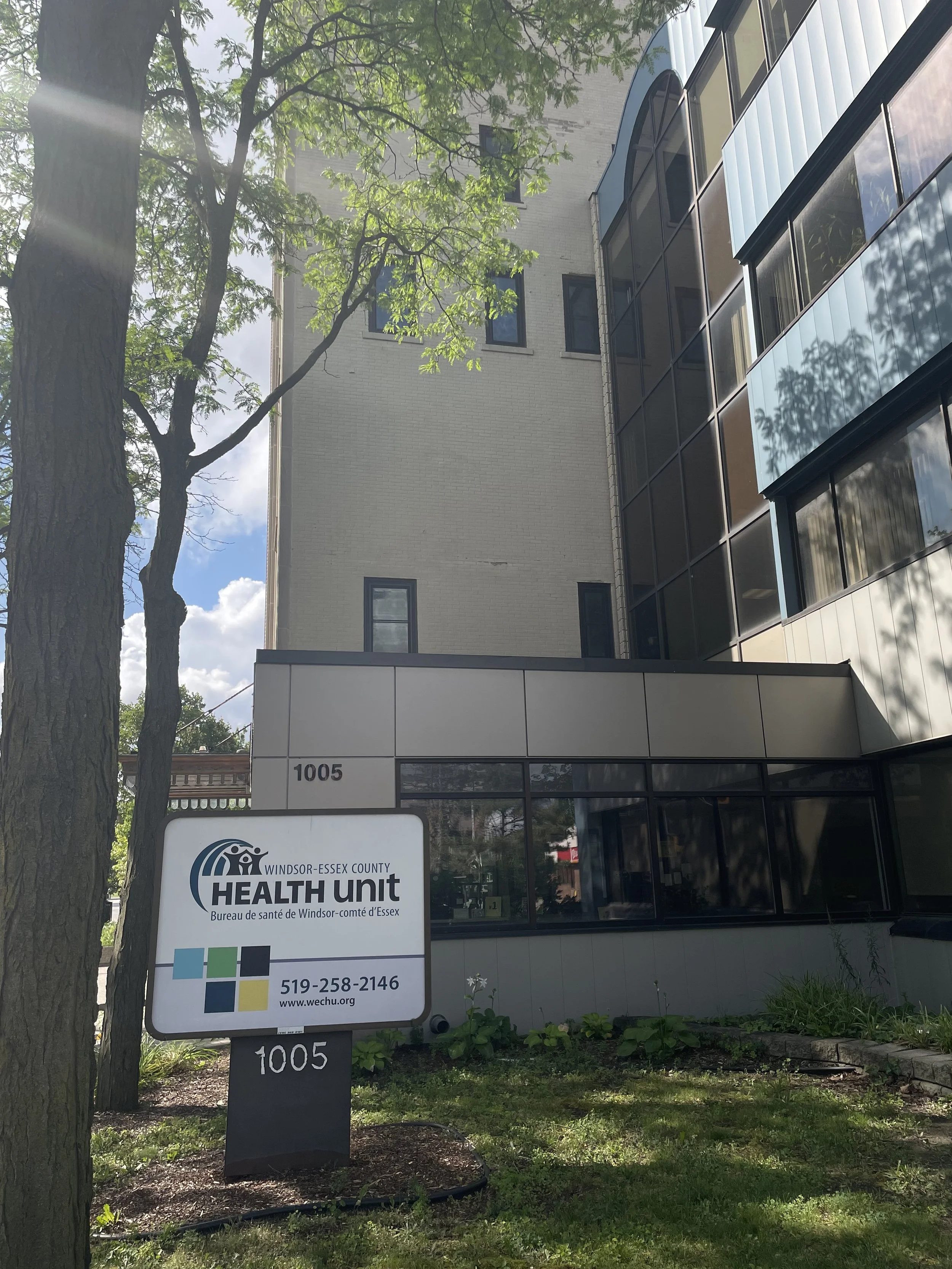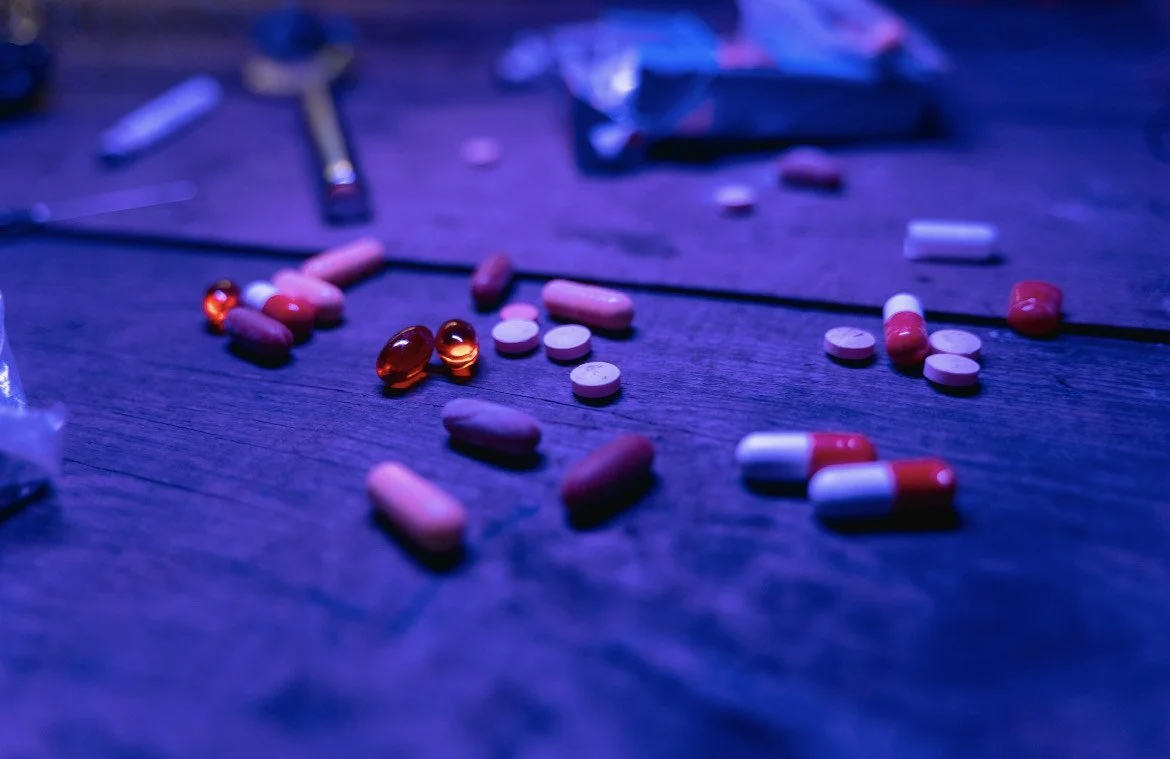Drug Use Harm Reduction: How Education Can Create Change
Education on drug use harm reduction methods can prevent opioid overdoses and save lives.
By Bella Canty
Her whole life, Marissa was told by everyone around her to not engage in any form of drug use. While the message had good intentions, she found herself involved in drug use anyway. Then overdoses became all-too-common occurrences among the people in her community.
When she looked to take steps to help prevent the people around her from being killed from overdoses, specifically from drugs laced with potent opioids, she was left with the same message she had been given her whole life: If you don’t want to die from drugs, don’t use drugs.
Windsor Essex County Health Unit in July 2023. Photo by Bella Canty.
Windsor, Ontario is a city like many others. There are diligent residents, playful children and a skyline filled with possibilities. With the commonality of this city comes homelessness, mental illness and rampant opioid-induced deaths.
"The end of the prevalent issue of opioid overdoses must begin with education,” says Marissa, a 37-year-old harm reduction advocate and former drug abuser in Windsor who requested to not share her last name.
Educating people on both why not to use drugs and what to do in the situation of an overdose doesn’t have to be mutually exclusive.
The Government of Canada reports 7,328 people died from opioid toxicity across the country in 2022. This is equivalent to 20 potentially preventable deaths per day, two times more than in 2019. These deaths range from teenagers to lifelong drug abusers.
When looking at these numbers, it’s clear that telling people who use drugs to simply stop, will not help. That’s where harm reduction comes in.
What exactly is harm reduction? “Harm reduction is not as new of a concept as people think it is. It simply acknowledges people may get involved in a specific circumstance and takes measures to minimize the risks,” says Gordon Thane, manager of the Windsor Essex County Health Unit’s Chronic Disease and Injury Prevention Department.
Harm reduction includes concepts such as wearing a seatbelt to prevent deaths in the instance of a car accident, learning CPR to save someone whose heart has stopped and using methods to prevent pregnancy. Therefore, why have we drawn the line at preventing opioid overdoses? The simple answer is stigma.
Natalie Delia Deckard, head of interdisciplinary studies and associate professor of criminology at the University of Windsor, says “a key part of harm reduction education is ending stigma, and treating people who use drugs with dignity and respect is the first step.”
The truth is that drug use is not uncommon. According to the Government of Canada, in 2017, before the legalization of cannabis in 2018, 22% of Canadians (or 6.5 million people) over age 15 had used a nonprescribed psychoactive pharmaceutical. In 2021, The National Post reported that after Canada and some American states legalized cannabis, education on safety precautions when using cannabis had grown, and opioid deaths had decreased by an average of 17%.
Windsor City Hall in July 2023. Photo by Bella Canty.
This shows teaching people who use drugs how to do so with precaution, without treating them like criminals, can save many lives. Harm reduction does not have to be difficult, as City Councilor Renaldo Agostino of Downtown Windsor points out.
“Harm reduction can be something as small as carrying Naloxone and calling 911 in the instance of an overdose,” he says.
Naloxone is an accessible life-saving medication sold most commonly under the brand name Narcan. Its purpose is to reverse or reduce the effects of opioids, and therefore, an overdose. Across Canada, Narcan can be given out, completely free and without a prescription, by any pharmacist. In Michigan, the average price rises to $127, according to a study by University of Michigan researchers.
After administering Narcan, you must immediately call 911. Many people feel they may get into trouble if they call 911 while in possession of illegal substances. However, in both Canada and Michigan, there are Good Samaritan laws that protect anyone who is seeking medical assistance for an overdose — who have not been reckless in their care — from being charged with drug possession.
Drug users and addicts can be educated on harm reduction methods as well. In recent years, many cities across Canada and the United States have opened some form of clinic for drug injury prevention that has access to methadone and other forms of drug treatments. Methadone is a synthetic narcotic used legally, and safely, to treat pain and narcotic addictions. When used to treat drug addictions, methadone can be taken in liquid form daily to minimize drug withdrawals and cravings.
Photo via Pexels
Though methadone is still a narcotic, it allows people with addictions to become dependent on a drug that is safe, doesn’t affect behaviors and allows them to become a more functioning member of society. Methadone gives drug abusers the first step they need in getting help. This is a form of harm reduction that recognizes immediate drug-free sobriety is not always realistic for everyone.
Fentanyl test strips can also be an effective means of preventing fentanyl overdoses in drug users. Though they are not as widely available as other forms of harm reduction, they can be purchased online from places such as Amazon for as low as $7 CAD. These strips allow consumers to screen their drugs for fentanyl, an extremely powerful pain-relieving agent that is lethal if used outside of a hospital setting. Even if they continue to use dangerous substances, these strips give people time to get help without their addiction instantly killing them.
It is critical to meet individuals where they are and not to overlook their struggles simply because they may not be understood. We are still a long way from having harm reduction at the forefront of the conversation of ending the opioid overdose crisis. But educating yourself on how to prevent or reverse an overdose is the first step.
If you need to talk to someone or need aid, here’s a list of resources:
Windsor Community Crisis Line 519-973-4435
Connex Ontario Helpline 1-866-531-2600
A helpline for addiction, mental health and problem gambling services. The helpline operates 24/7 and will link callers with appropriate services in their communities
Michigan Addiction Hotline 866-210-1303 with 24/7 support
Michigan Mental Health Hotline 866-903-3787
In an emergency call 911




